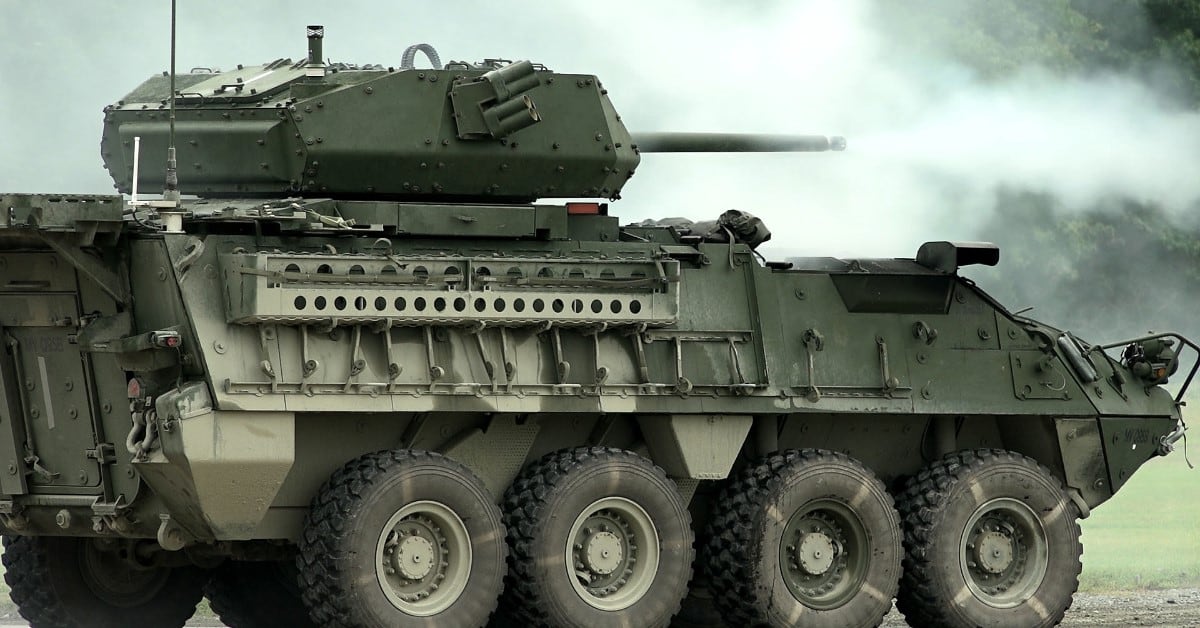The upgraded Stryker Infantry Carrier Vehicle - Dragoon has arrived at the 2nd Cavalry Regiment to fulfill an urgent-need request from the unit, which is permanently stationed in Germany.
The Stykers are expected to be delivered to the regiment over the next few weeks.
The vehicle has been “upgunned” with a 30mm cannon to replace the vehicles’ previous M2 .50 caliber machine guns.
The newly fielded Stryker has a remote-operated, unmanned turret; a new, fully integrated commander’s station; and upgraded driveline component and hull modifications, according to information from Program Executive Office-Ground Combat Systems.
The Army was provided more than $300 million in emergency Congressional funding in late 2015 to rapidly develop and field the upgunned Stryker as a counter to Russian aggression on the European continent.
“This capability that is coming to 2CR [the 2nd Cavalry Regiment] is directly attributable to Russian aggression,” Lt. Col. Troy Meissel, the regiment’s deputy commander, told reporters in August at a live-fire test range at Aberdeen Proving Ground, Maryland.
“Back in the Cold War there were 300,000 Soldiers in Europe, and today there are 30,000. So how do we, as an Army, make 30,000 Soldiers feel like 300,000? This new [capability] is one of the ways that can help us do that,” Meissel added.
The regiment is already actively working with foreign partners in Europe to increase its capabilities and to outgun Russian weapons systems.
In October, the regiment arrived at a Polish military outpost located roughly 100 miles from the fortified Russian enclave of Kaliningrad. The deployment was part of NATO’s enhanced Forward Presence initiative, which is a deterrence posture meant to reassure eastern NATO member-states of the alliance’s ongoing commitment to their security.
The previous iteration of the Stryker vehicle was found to be outmatched by Russia’s BMP-3 tracked infantry fighting vehicles, which were seen during the Russian intervention in Ukraine.
“The Russians, it turns out, had upgraded and fielded significant capabilities while we were engaged in Iraq and Afghanistan,” Army Vice Chief of Staff Gen. Daniel Allyn said last year.
Photos of Russian armored personnel carriers made public during the annexation of Ukraine’s Crimea region catalyzed the fast-tracked acquisition program that delivered the new Stryker, Maj. Gen. David Bassett, the program executive officer for Ground Combat Systems, said in a statement.
“This is a great example of where we tailored the acquisition process to meet a timeline being driven by an immediate operational need,”Bassett said.
“We are delivering significant capabilities to Soldiers at an accelerated pace, because of our ability to seek out mature technologies and accept and manage concurrency of detailed design, manufacturing, and testing in order to increase delivery speed,” he added.
Kyle Rempfer was an editor and reporter who has covered combat operations, criminal cases, foreign military assistance and training accidents. Before entering journalism, Kyle served in U.S. Air Force Special Tactics and deployed in 2014 to Paktika Province, Afghanistan, and Baghdad, Iraq.





